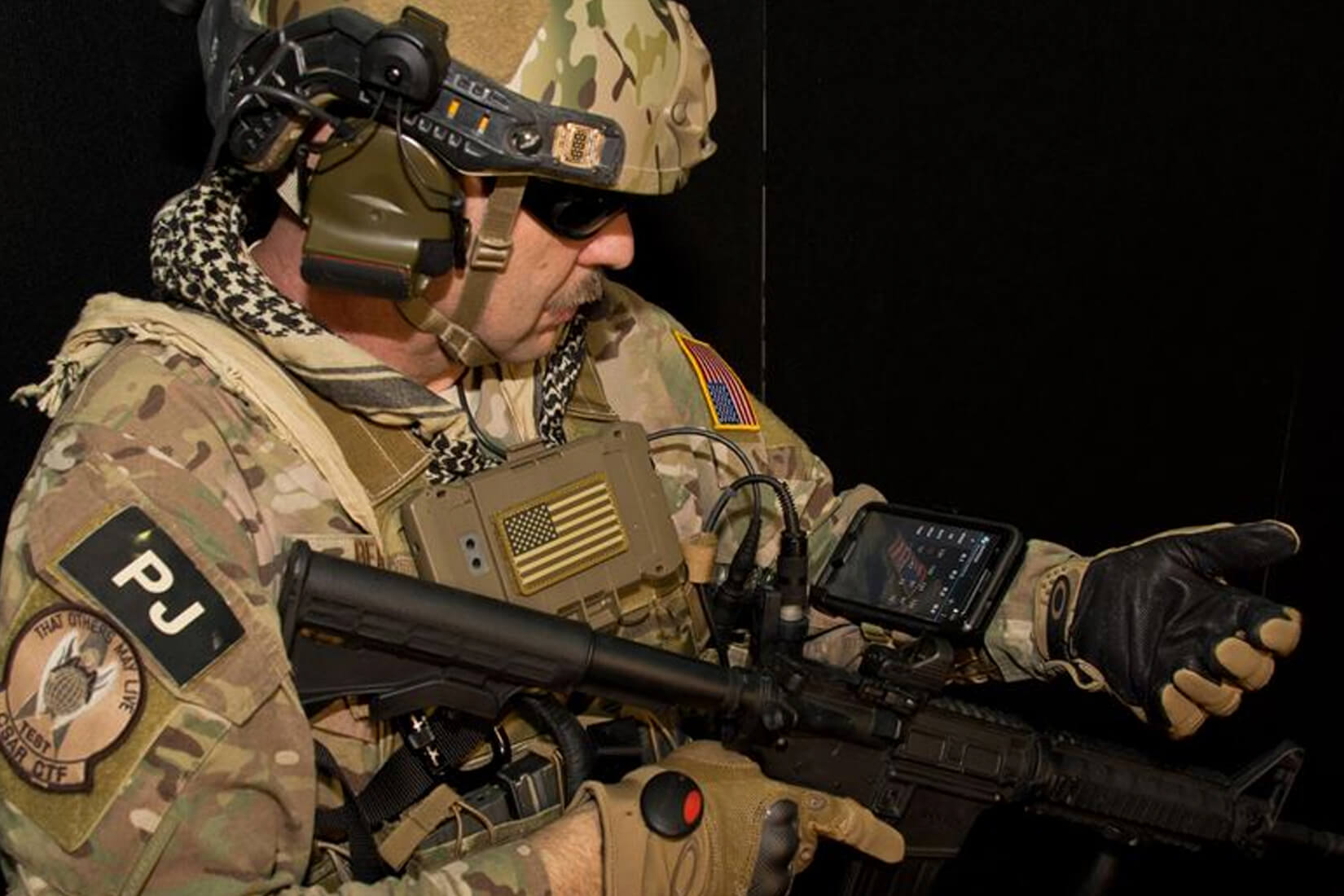
Air Force photo
WRIGHT-PATTERNSON AFB, OH — What if battlefield medics could monitor multiple injured servicemembers in the field thought a new electronic monitoring tool? The answer isn’t some futuristic concept but technology that actually exists now.
Based on recent innovations, both the Air Force and the Army are well on their way to using remote monitoring to save wounded warrior lives.
To develop the Battlefield Assisted Trauma Distributed Observation Kit (BATDOK), Air Force researchers got out of the lab and actually embedded on missions with medical airmen. The software can run on a smartphone or other mobile devices. It extracts patient information from a range of commercially available, Food and Drug Administration-approved sensors.
The integrated development process was critical to making BATDOK a tool that seamlessly integrates mobile capabilities for Airmen in the field,
“BATDOK is a multi-patient, point of injury, casualty tool that assists our human operators and improves care,” explained project manager Gregory Burnett, PhD, of the Airman Systems Directorate in the Warfighter Interface Division of the 711th Human Performance Wing. said Burnett. “It can be a real-time health status monitoring for multiple patients, a documentation tool, a user-definable medical library, a portal to integrate patient data into their electronic health records, and finally it is interoperable with battlefield digital situation awareness maps, which helps identify the exact location of casualties.”
Burnett was able to use his background is in computer engineering, with an emphasis in embedded electronics and mobile interfaces, to design BATDOK but realized hands-on experience was necessary to make it most useful in the field.
“We physically left the lab, got into the field with the operators, and observed firsthand the challenges and deficiencies they face,” Burnett said in an Air Force press release. “And when I say into the field, I mean we literally rode in the helicopters into hot landing zones, and observed medical Airmen stabilize and package up patients for transport and load them back on the helicopter.
“We see, at the point of injury, the challenges and limitations that our medical Airmen face. With those lessons learned and gaps identified through direct experience, we come back to the lab and devise innovative solutions to address the short falls we observed firsthand in the field.”
Communication with real-world medics continued throughout the design process, Burnett pointed out, adding, “From day one, every interface, every button, every menu, was user-validated by pararescue Airmen and combat rescue officers that were involved in the design, integration and testing process,” said Burnett. “Nothing is added without the explicit request and review by the operator.”
One issue was to not add to the heavy loads carried by medical airmen, he added. “BATDOK was designed to not add any additional burden to battlefield Airmen’s tactical ensemble,” said Burnett. “From the beginning, we are designing to enhance capabilities, while aiding their survivability and le
The Army also is doing cutting edge research in remote monitoring on the battlefield and elsewhere. Earlier this year, Army Medicine launched the Army Virtual Medical Center at Brooke Army Medical Center.
At the kickoff ceremony, Lt. Gen. Nadja West, the surgeon general and commanding general, U.S. Army Medical Command, described the importance of virtual medicine in saving injured soldiers on the battlefield.
“This capability will be increasingly critical to ensure that soldiers will survive war wounds and make it home,” West said. “Our primary focus is care for our soldiers, and also our sailors, airmen and marines, because in this joint environment the bullets, injuries and illnesses know no boundaries or uniform color.
“We have to be mobile, we have to be fast … and we have to be ready to support them in a full range of military operations,” she noted.
Mobile medics demonstrated at the event some of the equipment they use to complete a patient assessment and communicate with a health care provider via video conferencing.
